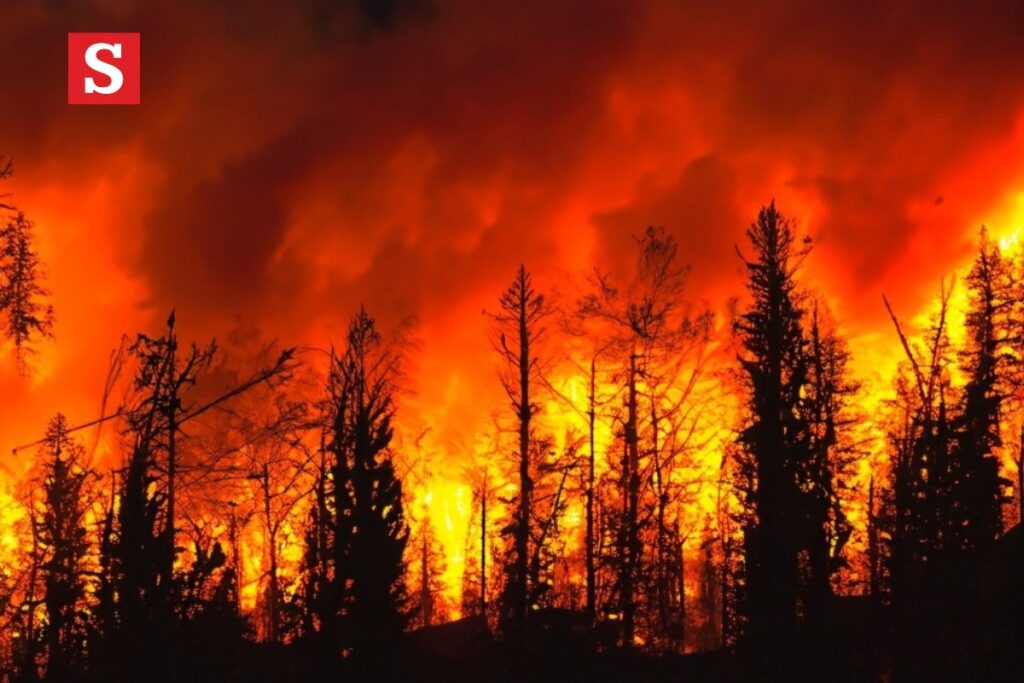Wildfires have become a significant concern in California, particularly in Los Angeles. These fires devastate communities, disrupt lives, and cause extensive environmental damage. This article explores the impact of Los Angeles wildfires, the causes, prevention efforts, and the role of climate change. Keywords such as “California wildfires,” “Los Angeles fires,” “Palisades fire,” and “wildfire prevention” are integral to understanding the topic in depth.
The Frequency and Scale of Los Angeles Wildfires
Wildfires in Los Angeles have grown in frequency and intensity over the years. In recent times, the Palisades fire has garnered significant attention. This fire prompted mass evacuations and scorched thousands of acres, demonstrating the devastating power of wildfires.
California wildfires are fueled by a combination of natural and human-made factors. The dry, hot climate, coupled with Santa Ana winds, creates ideal conditions for fire to spread rapidly. Unfortunately, human activities such as unattended campfires and electrical faults often exacerbate these disasters.
Causes of Wildfires in Los Angeles
Natural Causes
- Climate Conditions: Extended periods of drought in California leave vegetation dry and highly flammable. High temperatures and low humidity add to the risk.
- Lightning Strikes: Natural electrical storms are common ignition sources for wildfires in remote areas.
Human-Induced Causes
- Negligence: Unattended barbecues, discarded cigarette butts, and fireworks are frequent culprits.
- Infrastructure Failures: Malfunctioning electrical grids and outdated power lines have been linked to major fires, including some in Los Angeles.
For a deeper understanding of the contributing factors, check out CNN’s live updates on Los Angeles wildfires.
Climate Change: A Driving Force
Climate change plays a pivotal role in the increasing severity of wildfires. Rising global temperatures lead to longer fire seasons and exacerbate drought conditions. In Los Angeles, the effects of climate change are evident as each year brings new records for the size and frequency of wildfires.
The Environmental Impact
Wildfires have devastating effects on the environment. They destroy habitats, kill wildlife, and release significant amounts of carbon dioxide into the atmosphere. The destruction of forests, known as “California’s carbon sinks,” further intensifies global warming.
Key Environmental Consequences:
- Air Quality Deterioration: Smoke from wildfires contains harmful particles that can travel hundreds of miles, causing respiratory issues.
- Water Contamination: Ash and debris often contaminate water supplies.
- Soil Erosion: Fires strip the land of vegetation, leading to erosion and landslides.
Mitigation and Prevention
Efforts to mitigate and prevent wildfires in Los Angeles focus on education, technology, and community engagement.
- Public Awareness Campaigns: Educating residents about fire safety and evacuation protocols.
- Fire-Resistant Infrastructure: Encouraging the use of fire-resistant materials in construction.
- Controlled Burns: Strategically setting small fires to clear dry vegetation and reduce the fuel for potential wildfires.
Explore the latest strategies and community responses on BBC’s wildfire coverage.
Role of Technology in Combating Wildfires
Innovative technologies are being developed to detect and control wildfires. Tools like satellite imagery and drones equipped with thermal sensors allow for faster detection and response. AI models now predict fire behavior, helping authorities allocate resources more effectively.
The Human Cost
Wildfires in Los Angeles have far-reaching human consequences. Thousands of residents lose their homes and livelihoods each year. The stress of evacuation, the financial burden of rebuilding, and the loss of loved ones take a significant toll on communities.
Evacuation maps and updates are critical during these emergencies. Learn more about the latest evacuation efforts by visiting NBC’s wildfire updates.
Preparing for the Future
Addressing the wildfire crisis requires a multifaceted approach:
- Policy Reforms: Stronger regulations on land use and fire safety.
- Community Programs: Involving residents in fire prevention activities.
- Global Action on Climate Change: Reducing greenhouse gas emissions to mitigate the effects of global warming.
Conclusion
Los Angeles wildfires are a stark reminder of the challenges posed by climate change and human negligence. While efforts to prevent and mitigate these fires are underway, the growing intensity of wildfires demands more robust solutions. From community engagement to technological advancements, every step counts in protecting lives, property, and the environment.
For more information on this critical issue, visit the comprehensive coverage by CNN, BBC, and NBC.




